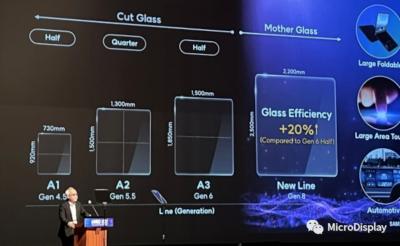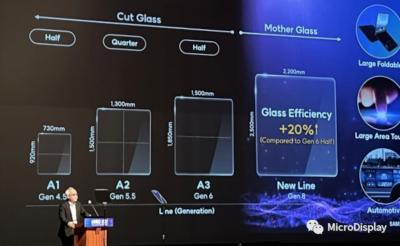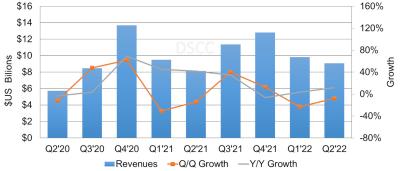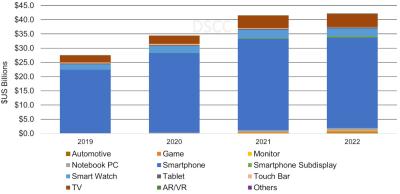OLED (Organic Light Emitting Diode) is a display technology that is brighter, more efficient, thinner and feature better refresh rates and contrast than an LCD display. OLEDs deliver the best picture quality ever and OLED displays have been used in smartphones, wearables and TVs.
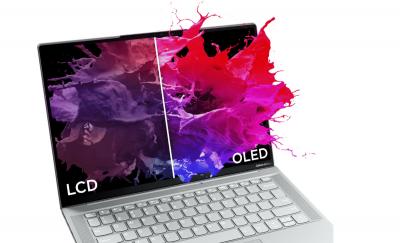
Why are OLED displays better than LCDs?
- In OLED displays, each pixel emits light independently (in LCDs, there is a white backlight).
- The contrast ratio of OLEDs is much better than in LCD, so are the refresh rates and the viewing angles.
- OLEDs are thinner and lighter than LCDs, and can be made flexible, foldable, rollable and transparent.
- OLEDs are more efficient, as only lit pixels draw energy. A smart user interface can result in very power efficient OLED displays!
2019 - OLED laptops finally arrive
OLEDs are already very successful in smartphone displays (over 500 million panels produced annually, adopted in smartphones from Apple, Samsung, Sony and others), OLED TVs and wearables. While in early 2016 several laptop makers announced the first OLED laptops (such as the Lenovo X1 Yoga with its 14" 2550x1440 AMOLED and the HP Spectre X360 with its 13.3" 2560x1600 AMOLED display), these laptops were produced in small quantities and quickly discontinued.
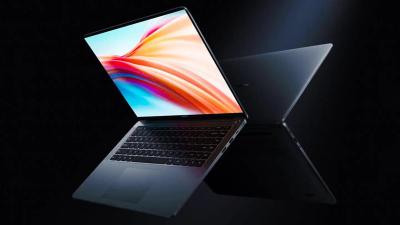
In early 2019, Samsung finally announced it start mass producing OLED displays for laptops. Since then we have seen many laptops from HP, Dell, Asus, Gigabyte, Lenovo and others adopt OLED displays, first at premium models and slowly in medium-range laptops as well. Click here for our complete list of laptops with OLED displays. Samsung, and other display makers, are expanding OLED laptop production capacity as demand for IT in general is rising and consumers prefer OLED displays.
Image retention (burn-in)?
One of the major drawbacks of an OLED display is that because each pixel is driven independently and because the lifetime of an OLED emitter is limited, OLED panels suffer from image retention (known as burn-in). A much-used pixel is less bright than a pixel that hasn't been driven a lot (for a more technical explanation, click here).
In computer user interface this is a problem - as some UI elements are quite fixed (toolbars, icons, etc). There are some technologies to handle this problem - for example by measurement and compensation, by using a tandem architecture to extend lifetime, and more. The situation has improved much in recent years, to the point where OLEDs are very much suitable as laptops displays.
Further reading
The latest OLED Laptop news:
Samsung Display reportedly decided to use 8.7-Gen glass substrates in its upcoming IT OLED fab
OLED makers are gearing up to increase production of IT OLED panels, used in laptops, monitors and tablets. Towards that, analysts expects over 10 8.5-Gen OLED lines under consideration now in the industry. This drive is led by Samsung Display that confirmed is is building a 8-Gen (2200x2500 mm) OLED production line, that will begin production in 2024.
A 8-Gen (or actually 8.5-Gen) fab uses 2200x2500mm glass substrates. According to a new report in Korea, Samsung actually decided to adopt a larger glass - a 8.7-Gen 2290x2620 mm. The ~10cm increase will increase production efficiency by around 9%, but this means that current 8.5-Gen LCD equipment that Samsung hoped to use will not be usable any more.
RAPT develops unique touch solutions for OLED monitors and signage displays
The COVID-19 pandemic created an increased demand for high quality IT solutions, including monitors and collaborative tools, which prompted OLED display makers to start offering solutions for this market for applications like computer monitors, signage and more.
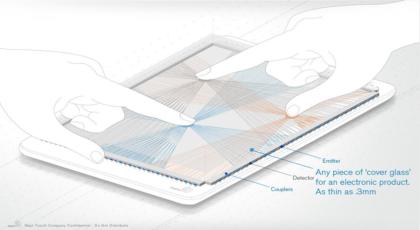
OLED displays that are 20-inch or more suffer from incompatibility with standard capacitive touch, because the thin OLED panel results in large parasitic capacitive coupling with the touch surface. The dynamic driving of OLEDs (where only lit pixels draw current) further reduces the capacitive touch performance by introducing unpredictable “display pattern noiseâ€. These issues are easily mitigated in small area displays, but as OLEDs increase in size, the performance and costs of capacitive solutions suffer.
Samsung to use a single-stack structure in its first 8-Gen OLED production line
Last Month Samsung Display confirmed that Samsung is now building a 8-Gen (2200x2500 mm) OLED production line, that will begin production in 2024.
It is expected that the new line will mostly produce panels for IT devices (laptops and tablest) and also for automotive applications. Many believe that these applications will adopt tandem stack structure to increase brightness and lifetime. According to a new report, Samsung's new line will adopt a single-stack structure, and not a dual-stack one.
UBI: sales of medium and large OLED displays will reach 26.3 million units in 2022
UBI Research estimates that sale revenues of medium and large OLED displays (UBI defines these from 10-inch and up) rose 22.9% in Q2 2022 compared to the previous quarter and 11.2% compared to last year - to reach $1.67 billion.
In term of sales, UBI estimates that total shipments in 2022 will reach 26.3 million units. Most of the growth in 2022 will come from laptop displays - where shipments almost doubled in the second quarter to 2.18 million units.
Samsung Display's CEO confirms plans for a 8-Gen IT OLED production line, to begin operations in 2024
Samsung Display's CEO Choi Joo-sun says that the company sees a great potential for OLED displays in the IT market (mainly notebook and monitor displays), and that Samsung is building a new 8-Gen (2200x2500 mm) production line which will begin production in 2024. The glass efficiency at 8-Gen (uncut glass) will be 20% higher compared to Samsung's 6-Gen lines.
This new fab was already reported last year, but this is the first time we officially hear a commitment from SDC. According to DSCC, there are over 10 8.5-Gen OLED lines under consideration now in the industry, as demand for OLED panels for laptops, tablets and monitors is o the rise. Samsung is the current leader in OLED IT displays.
DSCC: OLED panels shipments declined 3% in Q2 2022, but revenues increased 12%
DSCC says that in Q2 2022, OLED panel revenues increased 12% compared to Q2 2021, while shipment units declined 3%. Fewer OLEDs were shipped, but revenues increased as we've seen an increased growth in high value panels (gaming, monitors, laptops, automotive, etc) and also an improved form factor adoption in smartphones.
In Q2 2022, smartphones remained the largest OLED application with a 76% unit and revenue share. OLED smartwatches had a 16% unit share (and a 6% revenue share), and OLED TVs had a 11% revenue share (up from 8% in Q1 2022).
Asus to launch its Zenbook 17 Fold OLED laptop on August 31
In January 2022, Asus announced its first foldable laptop, the ZenBook 17 Fold OLED. The innovative device offers a 17.3" 2560x1920 foldable OLED display (supplied by BOE) that can fold in half to become a 12.5-inch device with dual 1920x1280 displays.

ASUS now announced that it will officially launched the foldable laptop before the IFA 2022 trade show on August 31. Asus announce da virtual event on August 31 (14:00 CEST). This will be an interesting event to watch.
Samsung reports its financial results for Q2 2022, with excellent earnings from SDC, confirms it is developing microdisplay technologies
Samsung Electronics reported its financial results for Q2 2022, with record second-quarter revenues of 77.2 trillion Won ($59 billion USD).
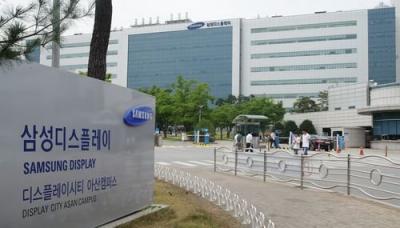
Samsung Display reported record second-quarter revenue and operating profit for mobile displays driven by solid demand from major customers. Samsung specifically mentions the growth in its laptop OLED business. Performance in the large panel business was weaker due to initial ramp-up costs of Samsung's QD-OLED displays, and a decline in LCD prices.
DSCC: the OLED market will grow 2% in 2022, led by strong demand for IT panels
DSCC estimates that the OLED market will increase 2% in 2022, to reach $42 billion. Revenues for smartphones, the leading OLED application, will actually decline by 4%, but this will be offset by increases in other applications.
In fact, some applications will experience very fast growth: OLED monitors (641% unit growth, 279% revenue growth), OLED laptops (64% units, 39% revenue) and automotive displays (73% units, 68% revenue).
Technical challenges and price wars delay the industry's 8.5-Gen OLED IT displays production lines
Following strong demand for IT devices, and Samsung's success in the OLED laptop market, OLED makers have began to plan building new OLED production lines specifically for IT applications: laptops, tablets and monitors.
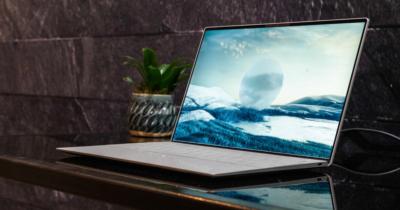
Several OLED makers, including Samsung, LG and BOE, are considering building 8.5-Gen production lines for this market. In fact DSCC estimated that there are 11 such lines under development right now. But it turns out that this is not so simple as designing the evaporation equipment for larger substrates is a challenge.
Pagination
- Previous page
- Page 5
- Next page
